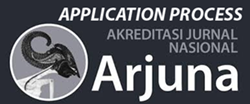Exploring Mathematical Attitudes among Primary Teachers: A Comparative Study in Selected District, India
DOI:
https://doi.org/10.59653/jemls.v2i03.913Keywords:
Primary School, Mathematical attitudes, Demographic factors, Quantitative research, & Educational reformsAbstract
This quantitative study will investigate the mathematical attitudes of primary teachers in Gaya District, Bihar, India, with the aim of understanding how demographic factors will influence these attitudes. By utilizing a modified version of Moreira C.M.'s (1992) Attitude towards Mathematics Inventory, the research has assess teachers' understanding, confidence, and pedagogical approaches in teaching mathematics. Data on gender, location, caste background, qualification, and teaching experiences will be collected through a structured questionnaire. A stratified random sampling technique has ensured representation across demographics, with a targeted sample size of at least 200 primary teachers. Statistical analyses, including t-tests and ANOVA, will be employed to examine the hypotheses regarding gender, location, caste background, qualification, and teaching experiences. The findings are expected to provide valuable insights into the factors shaping mathematical attitudes among primary teachers in a diverse educational context like Bihar, India, contributing to the ongoing educational reforms in the region.
Downloads
References
Ajzen, I. (1991). The theory of planned behavior. Organizational Behavior and Human Decision Processes, 50(2), 179–211.
Bandura, A. (1986). Social foundations of thought and action: A social cognitive theory. Englewood Cliffs, NJ: Prentice-Hall.
Bursal, M., & Paznokas, L. (2006). Mathematics anxiety and pre-service elementary teachers' confidence to teach mathematics and science. School Science and Mathematics, 106(4), 173–179.
Cohen, J. (1988). Statistical power analysis for the behavioral sciences (2nd ed.). Lawrence Erlbaum Associates.
Creswell, J. W. (2014). Research design: Qualitative, quantitative, and mixed methods approaches. Sage Publications.
Field, A. (2013). Discovering statistics using IBM SPSS statistics (4th ed.). SAGE Publications.
Gorain, S. & Kalhotra, S, K. (2024). Does Teacher Burnout and Academic Stress Influence Teacher Effectiveness –A Systematic Review. Journal of Education Method and Learning Strategy, 2(2), 253-266. https://doi.org/10.59653/jemls.v2i02.782
Gravetter, F. J., & Wallnau, L. B. (2017). Statistics for the behavioral sciences (10th ed.). Cengage Learning.
Grootenboer, P. (2008). Mathematical belief change in prospective primary teachers. Journal of Mathematics Teacher Education, 11(6), 495–515.
Marsh, H. W., Martin, A. J., & Cheng, J. H. S. (2013). A multidimensional perspective on gender differences in mathematics self-concept, engagement, and achievement: Evidence from Singapore. American Educational Research Journal, 50(5), 1114–1146.
Mirgank, K, K., Boruah, D., Tasing, J., & Gorain, S. (2024). Sleeping Disorders Symptoms (SDS) of College Students in relation with Attention Deficit Hyperactivity Disorder Symptoms (ADHD). International Journal of Teaching, Learning and Education, 3(1), 8-11.
Moore, D. S., McCabe, G. P., & Craig, B. A. (2012). Introduction to the practice of statistics (7th ed.). W.H. Freeman and Company.
Moreira, C. M. (1992). Attitude towards mathematics inventory. Journal of Educational Research and Practice, 14(3), 45–58. Springfield Publishing.
National Council of Educational Research and Training. (2006). National focus group on teaching of mathematics. New Delhi: NCERT.
National Council of Teachers of Mathematics. (2000). Principles and standards for school mathematics. Reston, VA: NCTM.
Schoenfeld, A. H. (2004). The math wars. Educational Policy, 18(1), 253–286.
Singh, A., & Sharma, R. (2023). Mathematical attitudes among primary teachers in Bihar: A study. Educational Research Journal.
Sonowal, M., Sonowal, R., Senapati, T., & Gorain, S. (2022). Impact Of Bandhan Bank Microfinance On Economic Empowerment Of Rural Women, Assam. Journal of Pharmaceutical Negative Results, 13(9), 2092-2096 https://dx.doi.org/10.47750/pnr.2022.13.S09.253
Tabachnick, B. G., & Fidell, L. S. (2013). Using multivariate statistics (6th ed.). Pearson.
Thompson, A. G. (1992). Teachers' beliefs and conceptions: A synthesis of the research. In D. A. Grouws (Ed.), Handbook of research on mathematics teaching and learning (pp. 127–146). New York: Macmillan.
Wang, M., Liu, S., & Li, Y. (2018). The roles of attitudes toward technology, subjective norms, and perceived behavioral control in teachers' technology acceptance. Educational Technology Research and Development, 66(6), 1535–1555.
Downloads
Published
How to Cite
Issue
Section
License
Copyright (c) 2024 Kislay kishor Mirgank, Satish Kumar Kalhotra

This work is licensed under a Creative Commons Attribution-ShareAlike 4.0 International License.
Authors who publish with this journal agree to the following terms:
- Authors retain copyright and grant the journal right of first publication with the work simultaneously licensed under a Creative Commons Attribution-ShareAlike that allows others to share the work with an acknowledgement of the work's authorship and initial publication in this journal.
- Authors are able to enter into separate, additional contractual arrangements for the non-exclusive distribution of the journal's published version of the work (e.g., post it to an institutional repository or publish it in a book), with an acknowledgement of its initial publication in this journal.
- Authors are permitted and encouraged to post their work online (e.g., in institutional repositories or on their website) prior to and during the submission process, as it can lead to productive exchanges, as well as earlier and greater citation of published work (See The Effect of Open Access).
























